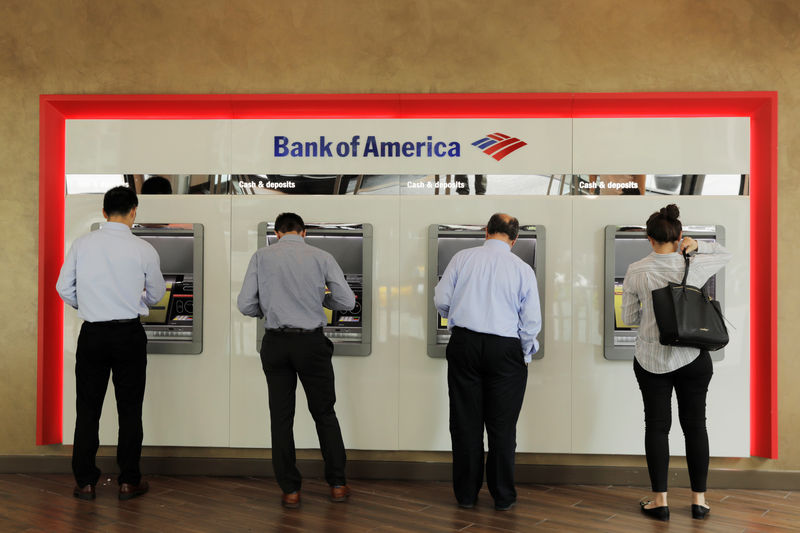 © Reuters. People withdraw money from Bank of America ATMs in New York
© Reuters. People withdraw money from Bank of America ATMs in New YorkBy Pete Schroeder
WASHINGTON (Reuters) – A new government survey released Tuesday showed the percentage of Americans who did not have a checking or savings account fell to the lowest level since the 2007-2009 financial crisis.
In 2017, just 6.5 percent of 129.3 million U.S. households were considered “unbanked,” according to new data from the Federal Deposit Insurance Corporation (FDIC). That rate, which represents about 8.4 million U.S. households, is half a percentage point lower than when the survey was last conducted in 2015, and the lowest level recorded since the survey began in 2009.
The FDIC attributed the decline to socioeconomic gains across U.S. households, given that unbanked and underbanked rates are higher among lower-income households. Thirty-four percent of respondents without bank accounts said their main reason was they did not have enough money to keep in a bank. Another 12.6 percent said their lack of accounts was due to a distrust of banks, while 8.6 percent said account fees were too high.
Another 18.7 percent of households were considered “underbanked” in 2017, meaning they had traditional accounts at banks but also relied on alternative financial products like payday loans or money orders in the last 12 months. That rate is 1.2 percent lower than the 2015 survey.
The study also found that the percentage of Americans who accessed their bank accounts through mobile devices has nearly doubled since 2013, climbing to over 40 percent in 2017. Over 15 percent of households reported mobile banking was their primary means of accessing their accounts, nearly triple 2013 levels.
Fusion Media or anyone involved with Fusion Media will not accept any liability for loss or damage as a result of reliance on the information including data, quotes, charts and buy/sell signals contained within this website. Please be fully informed regarding the risks and costs associated with trading the financial markets, it is one of the riskiest investment forms possible.
Source: Investing.com



























